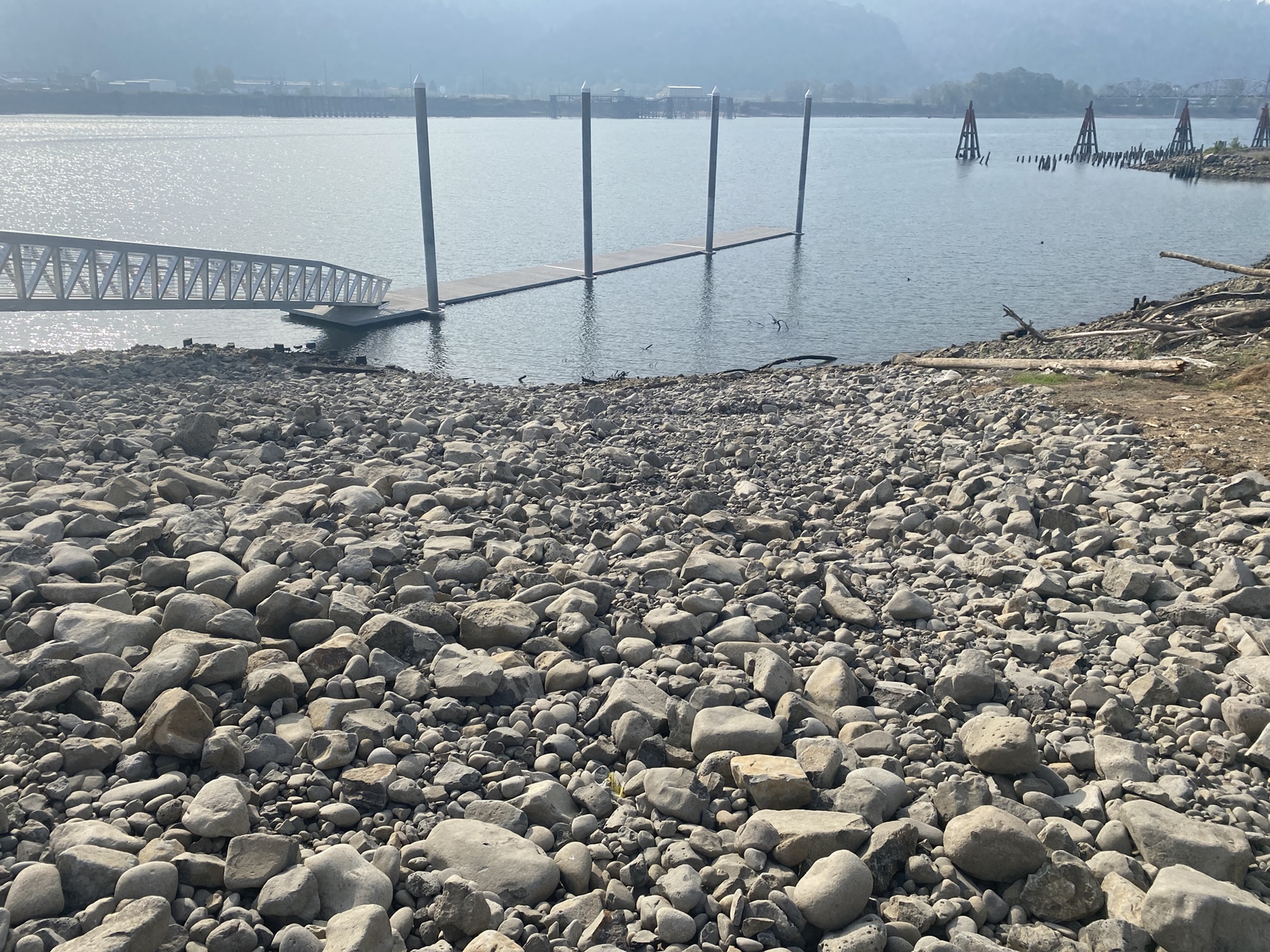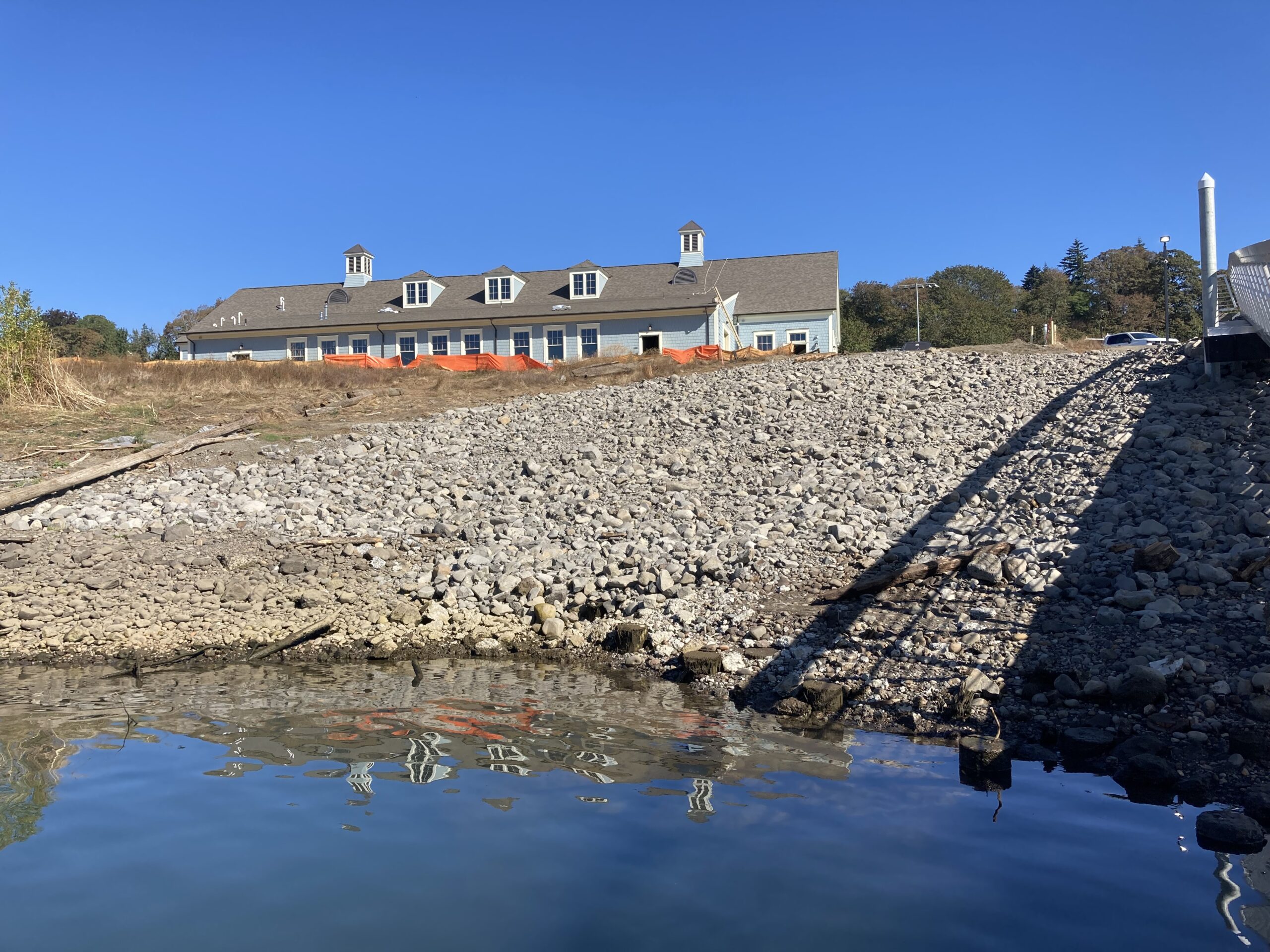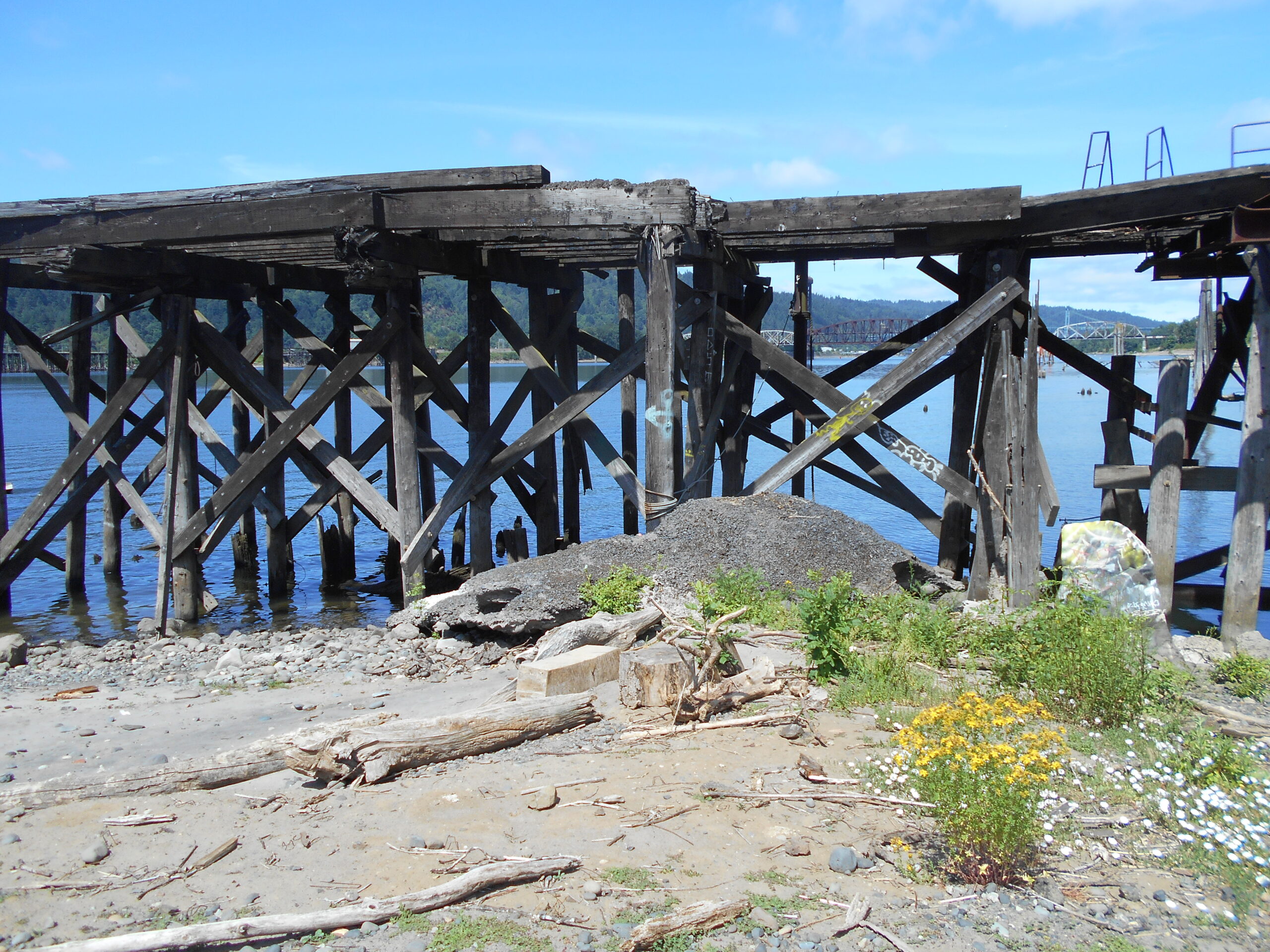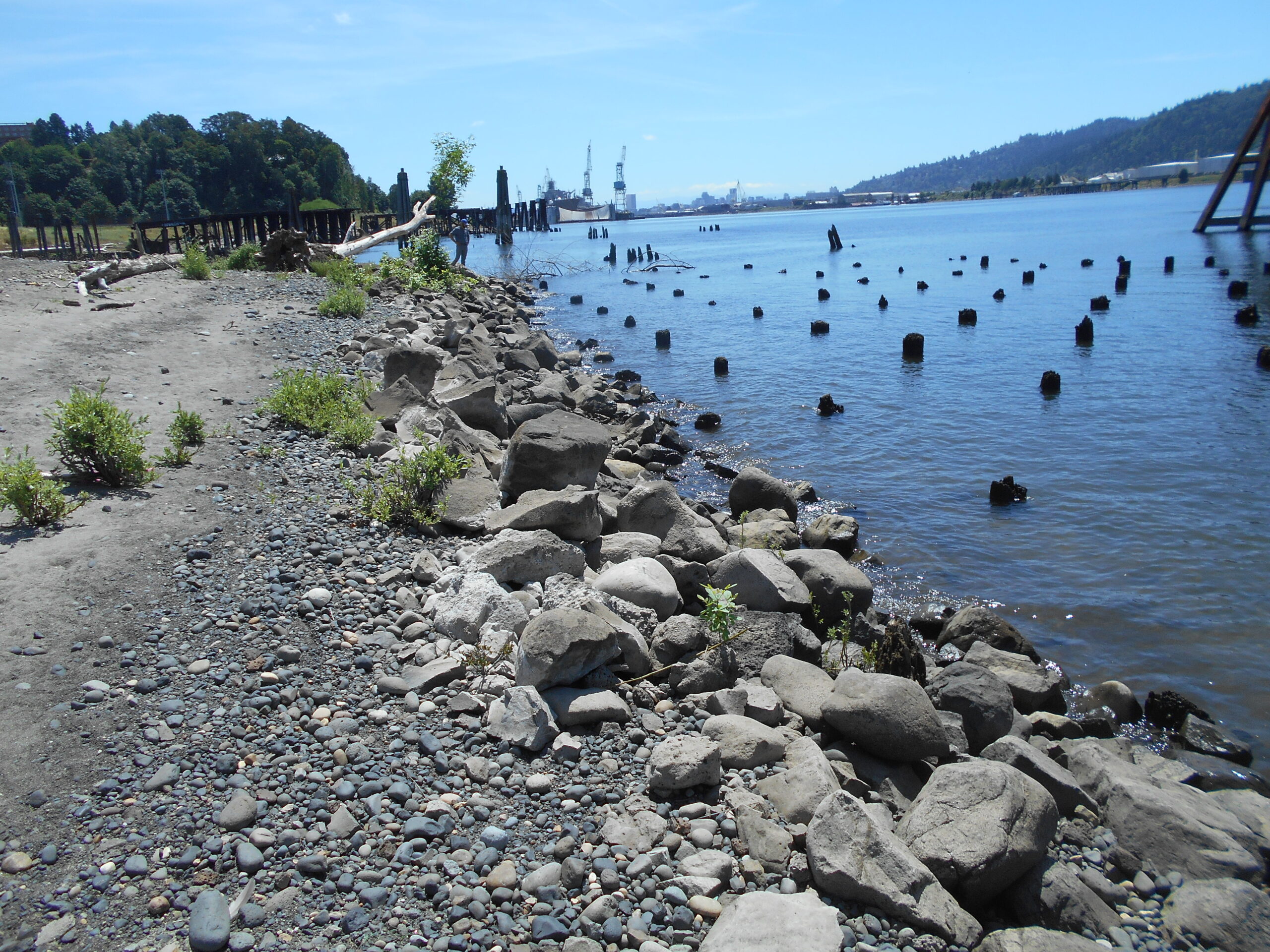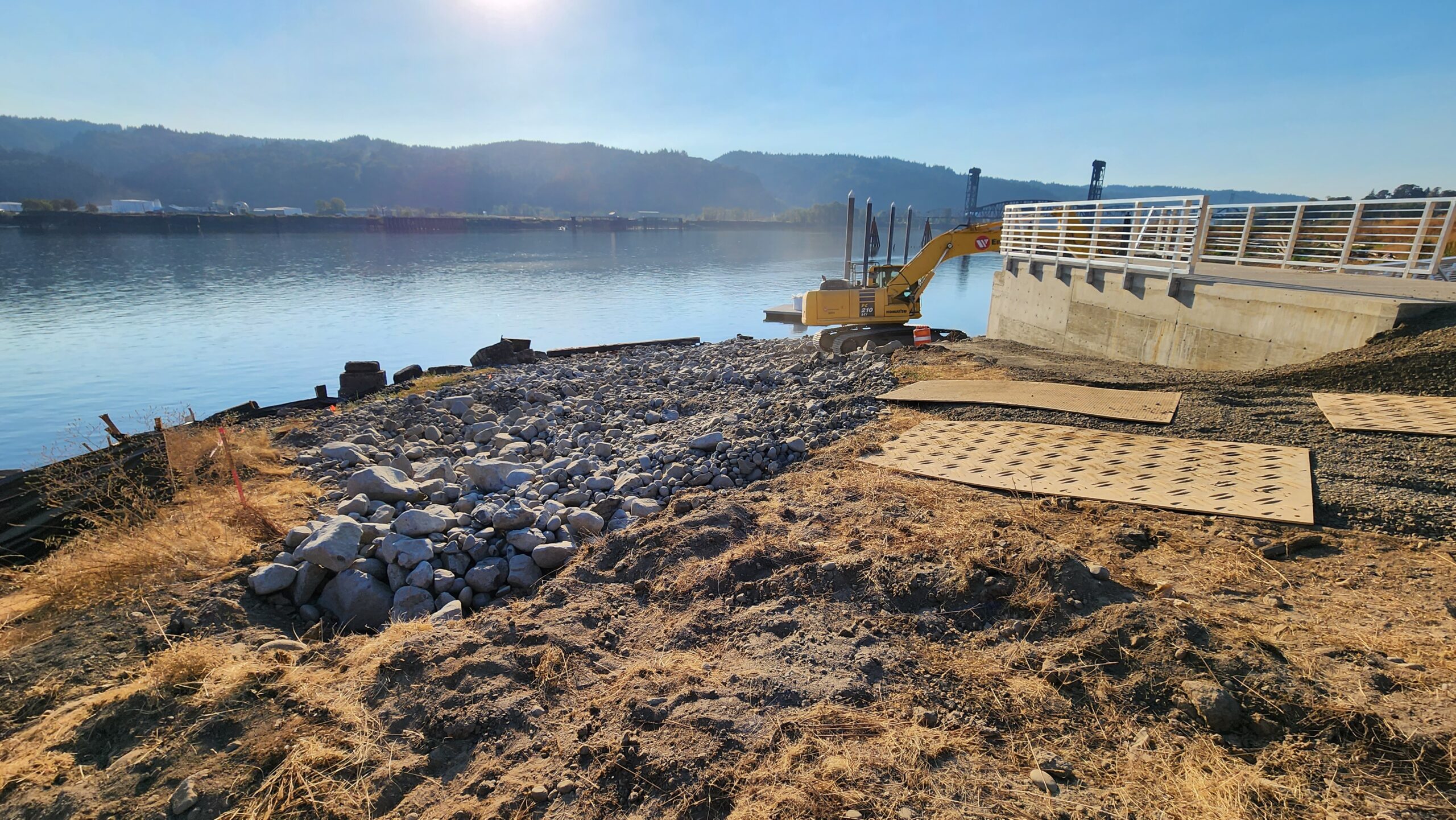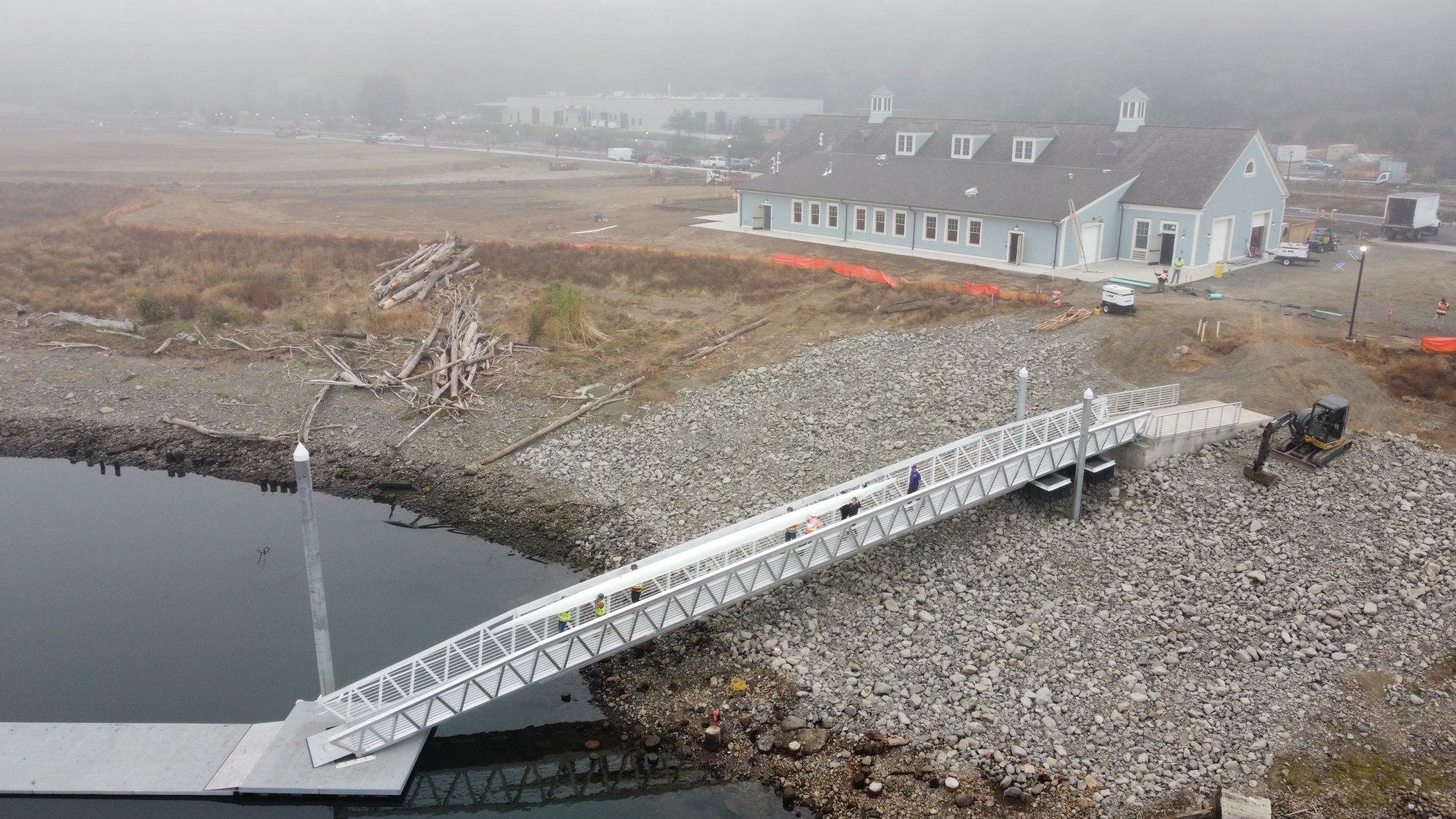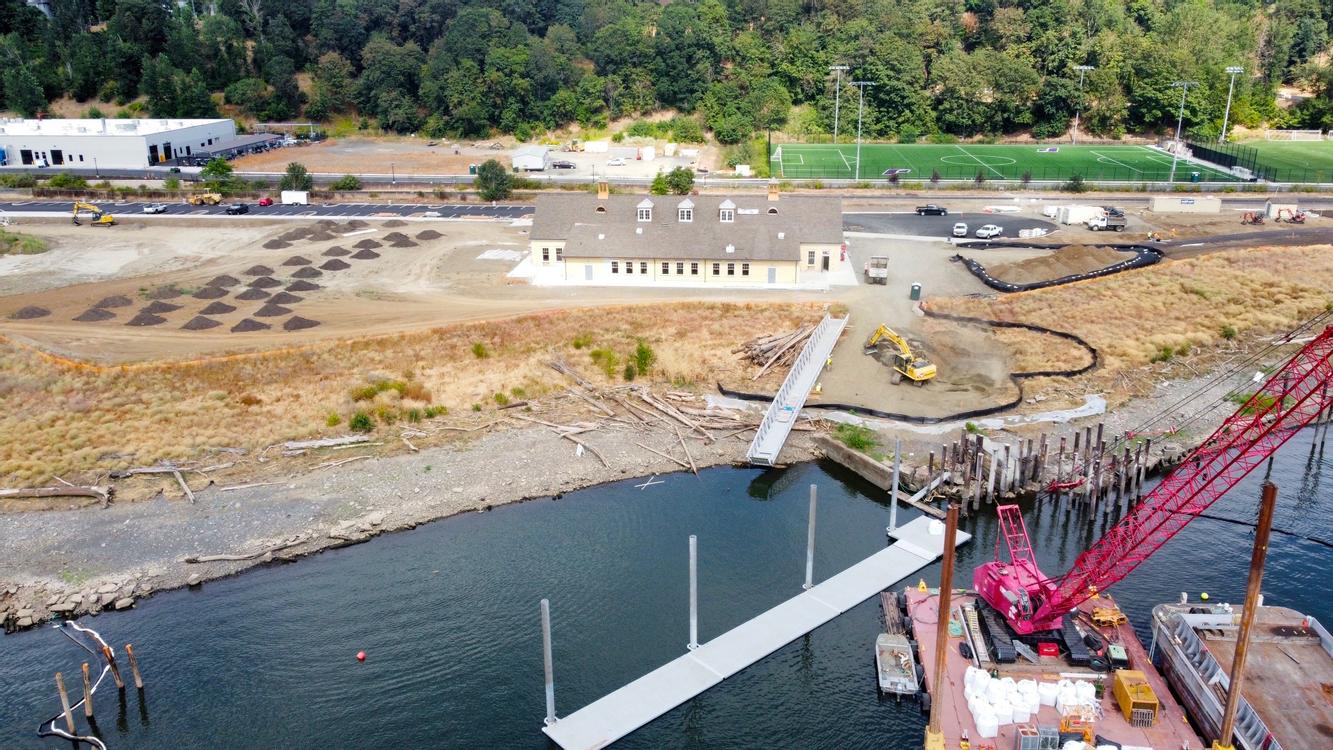Project Details
- Environmental Remediation
- Permitting & Engineering Design
Client
University of Portland
Date
June 2017 – Ongoing
Location
Portland, Oregon
Team Members
Benjamin Hecht, LG
Carolyn Carlstrom
Christopher Young
Eric Zick
Jeff Fellows, PE, MBA
Jeff Valluzzi
Jennifer Wynkoop
UP Environmental Cap Design, Permitting, & Shoreline Restoration
The University of Portland (UP) campus is perched on a bluff overlooking the Willamette River. When the University purchased 35 acres of waterfront property adjacent to its existing campus to build the Franz River Campus, it also inherited the legacy environmental conditions at the site.
The Franz River Campus sits on the eastern shore of the Willamette River within the Portland Harbor Superfund site. Over a century of industrial activities at the project site and the surrounding area left soil, groundwater, and sediment contamination that are now in various phases of remediation.
Even with existing challenges, the site and surrounding area represented a huge opportunity for expansion of the existing UP campus. In 2006, UP entered into an agreement with the US Environmental Protection Agency (EPA) to settle potential Comprehensive Environmental Response, Compensation, and Liability Act (CERCLA) liability for the site, which required investigations, removal actions, and site controls (capping), compliant with the Record of Decision issued by the EPA. An environmental cap was installed in 2012 to encapsulate contaminants of concern along roughly 2,500 linear feet (lf) of intertidal shoreline. Ongoing monitoring identified erosion of this cap’s original design, which was determined to be insufficient to withstand the excessive waves and hydraulic forces of the river.
The Landau Team was then hired by UP to re-evaluate site conditions and propose a viable long-term strategy for cap repair and stability. In 2017, a preliminary design and modeling analysis for repair of the cap was completed. The team developed numerous design strategies for UP and stakeholder consideration. To ensure that designs were advanced in alignment with permitting requirements, coordination with regulatory agencies began early in the design phase.
These efforts included coordination with EPA, the Oregon Department of Environmental Quality, Oregon Department of State Lands, US Army Corps of Engineers, NOAA’s National Marine Fisheries Service, and the City of Portland. After several iterations of design options, design and permitting of a localized cap repair was completed in 2022. The final alternative included integration of a new rowing dock facility, which was a high priority for UP. Future work is currently under evaluation.
The cap repair and shoreline restoration program successfully incorporated installation of UP’s new rowing dock facility, which included removal of old, dilapidated infrastructure that further helped to improve the overall environmental health of the shoreline and embayment.
The Challenge
The Landau Team was challenged to create a long-term solution to repair the cap that would also support a new dock structure for UP’s rowing teams. After evaluation of numerous alternatives, including expansive habitat restoration, the team and the project stakeholders agreed to a final design that accomplished 160 lf of cap repair and facilitated construction of the rowing dock facility to support continued campus development. As the final design strategy was in development, the team conducted an emergency repair program along 2,500 lf of the original project’s shoreline to stabilize the cap in areas showing the greatest signs of erosion. The emergency repair was completed in 2020. The final design was constructed during the in-water work window in 2022.
Our Approach
The Landau Team supported UP through numerous design options for repair and stabilization of the failed environmental cap, based on ever-changing project priorities and the diverse inputs and requirements of the involved stakeholders. Ongoing development of Franz Campus directly influenced design options, including dock facility integration; coordination of upland/in-water elements; habitat restoration strategies; compliance with numerous federal, state, and local permits; and contractor management. The project’s success was due heavily to proactive and consistent coordination with UP, the jurisdictions, the dock design engineer, and the contractor team.
The Solution
The need for emergency repair in 2020 provided the opportunity to evaluate repair methods, construction approaches, and upgraded capping material options in advance of final cap design and construction.
Active, in-field engagement with the overall contractor team during the course of construction allowed for timely adjustments to project design, due to real-time field conditions, seasonal river water levels, and schedule challenges.
Multiple permits, governing compliance over various independent and integrated aspects of the infrastructure and environmental repair project, required focused management especially as the scope of project changed over time.
